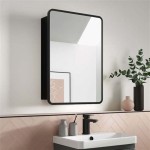How To Screen Mirror to a Non-Smart TV
Screen mirroring, the process of displaying the content from a mobile device or computer onto a larger screen like a television, has become increasingly popular. While modern Smart TVs come equipped with built-in features for screen mirroring, many households still rely on non-smart TVs. Fortunately, there are several effective methods to bridge the gap and enjoy the benefits of screen mirroring even without smart TV capabilities.
This article will provide a comprehensive guide on how to screen mirror to a non-smart TV. We will cover various hardware and software solutions, outlining the steps involved and the considerations necessary for a successful screen mirroring experience. Understanding these methods will allow users to display photos, videos, presentations, and other content from their devices onto a larger screen, enhancing entertainment, productivity, and collaborative viewing.
Utilizing HDMI Cables and Adapters
The most straightforward and reliable method for screen mirroring to a non-smart TV involves using a physical connection via an HDMI (High-Definition Multimedia Interface) cable. This method offers a stable and high-quality connection, delivering clear audio and video. The specific type of adapter required depends on the output port available on the source device (e.g., laptop, smartphone, tablet).
For laptops with an HDMI output port, a direct HDMI cable is all that is needed. Simply connect one end of the cable to the laptop's HDMI port and the other end to an available HDMI port on the non-smart TV. The TV's input source should then be switched to the corresponding HDMI port to display the laptop's screen. This method is generally plug-and-play, requiring minimal configuration.
For smartphones and tablets, the process is slightly different, as these devices typically do not have HDMI output ports. Instead, adapters are needed to convert the device's output to HDMI. Several types of adapters are available, including:
- USB-C to HDMI Adapters: These adapters are commonly used with newer Android devices and some tablets that feature a USB-C port. The adapter connects to the USB-C port on the device, providing an HDMI output that can then be connected to the TV.
- Lightning to HDMI Adapters: These adapters are designed for Apple devices (iPhones and iPads) with a Lightning port. The adapter connects to the Lightning port, providing an HDMI output.
- MHL (Mobile High-Definition Link) Adapters: MHL adapters were more common in the past, especially for older Android devices. However, USB-C and Lightning adapters have largely replaced them. An MHL adapter connects to the device’s micro-USB or USB-C port (depending on the device) and provides an HDMI output.
When using an adapter, ensure that it is compatible with both the source device and the TV. Check the adapter's specifications to confirm it supports the required resolution and audio formats. Once the adapter is connected, select the appropriate HDMI input on the TV to view the mirrored screen.
While using HDMI cables and adapters is a simple solution, it creates a physical connection restriction. The device must remain tethered to the TV during screen mirroring, which may limit mobility. However, the reliability and quality of the connection make it a suitable option for many scenarios.
Troubleshooting common issues with HDMI connections includes ensuring that the cable is securely connected to both the device and the TV. Also, verify that the correct HDMI input is selected on the TV. If the screen is not displaying correctly, try adjusting the display settings on the source device, such as resolution and refresh rate.
Employing Streaming Devices with Screen Mirroring Capabilities
Streaming devices, such as Google Chromecast, Amazon Fire TV Stick, and Roku, offer a wireless screen mirroring solution for non-smart TVs. These devices plug into an HDMI port on the TV and connect to the home's Wi-Fi network, enabling wireless screen mirroring from compatible devices.
Google Chromecast: Chromecast is a device that allows users to stream content from their mobile devices, tablets, or computers to a TV. To use Chromecast for screen mirroring, ensure that the Chromecast device is properly connected to the TV's HDMI port and powered on. Then, install the Google Home app on the mobile device or computer. Within the Google Home app, select the Chromecast device and choose the "Cast screen/audio" option. This will mirror the device's screen onto the TV.
Chromecast relies on the Google Cast protocol, which is supported by a wide range of apps and devices. It also allows for casting specific apps rather than mirroring the entire screen, which can be useful for conserving battery life and preventing notifications from appearing on the TV.
Amazon Fire TV Stick: The Amazon Fire TV Stick provides a similar functionality to Chromecast, but with a different user interface and ecosystem. To screen mirror using a Fire TV Stick, ensure that the device is connected to the TV and powered on. Navigate to the "Settings" menu on the Fire TV Stick and select "Display & Sounds," then "Enable Display Mirroring." On the mobile device, enable screen mirroring or casting (the specific name may vary depending on the device's manufacturer). The Fire TV Stick should appear as an available device to connect to. Select it to initiate screen mirroring.
The Fire TV Stick's screen mirroring feature is compatible with Miracast, a wireless display standard supported by many Android devices and Windows computers. This allows for a seamless screen mirroring experience without requiring additional apps or software.
Roku: Roku devices also support screen mirroring through Miracast. To enable screen mirroring on a Roku device, navigate to the "Settings" menu, select "System," then "Screen mirroring." Choose either "Prompt" or "Always allow" to enable screen mirroring. On the mobile device or computer, enable screen mirroring and select the Roku device from the list of available devices.
When using streaming devices for screen mirroring, ensure that both the streaming device and the source device are connected to the same Wi-Fi network. Also, be aware that the performance of wireless screen mirroring can be affected by network congestion and distance between the devices. Maintaining a strong Wi-Fi connection is crucial for a smooth and uninterrupted screen mirroring experience.
Utilizing Miracast-Enabled Devices
Miracast is a wireless display standard that allows devices to directly connect and mirror their screens without relying on a Wi-Fi network. This can be particularly useful in situations where a Wi-Fi network is unavailable or unreliable. Many modern devices, including Android smartphones and Windows computers, support Miracast.
To use Miracast for screen mirroring to a non-smart TV, a Miracast receiver is required. These receivers plug into an HDMI port on the TV and act as a bridge between the source device and the TV. Several Miracast receivers are available on the market, offering varying features and price points.
The process for connecting a Miracast-enabled device to a Miracast receiver typically involves the following steps:
- Connect the Miracast receiver to an available HDMI port on the non-smart TV and power it on.
- On the source device (e.g., Android smartphone or Windows computer), enable screen mirroring or wireless display. The specific name may vary depending on the device's manufacturer.
- The device will search for available wireless display devices. Select the Miracast receiver from the list of available devices.
- The device will then initiate a connection with the Miracast receiver, and the screen will be mirrored onto the TV.
Miracast offers a direct peer-to-peer connection, eliminating the need for a Wi-Fi network. This can result in lower latency and a more responsive screen mirroring experience. However, the range of Miracast is typically limited to a few meters, and obstacles between the devices can interfere with the signal.
Troubleshooting common issues with Miracast connections includes ensuring that both the source device and the Miracast receiver support the Miracast standard. Also, verify that the devices are within range of each other and that there are no significant obstacles blocking the signal. If the connection is unstable, try restarting both the source device and the Miracast receiver.
While Miracast offers a convenient wireless screen mirroring solution, it may not be compatible with all devices. Apple devices, for example, do not natively support Miracast. In such cases, alternative screen mirroring methods, such as using AirPlay with an Apple TV, may be necessary.

How To Screen Mirror Iphone A Non Smart Tv

How To Connect Phone Non Smart Tv Without Hdmi

How To Mirror Phone On Non Smart Tv Chromecast Screen Mirroring Hindi

3 Ways To Mirror Iphone Tv Without Apple Istreamer

How To Mirror Phone On Non Smart Tv Chromecast Screen Mirroring Hindi

2024 Tutorial How To Mirror Phone Tv Without Wi Fi
How To Connect A Non Smart Tv With My Smartphone Quora
How To Connect A Non Smart Tv With My Smartphone Quora

How To Screen Mirror From Cellphone Tv Using Hdtv Cable Only

4 Simple Ways To Mirror Phone Screen Without Wifi








